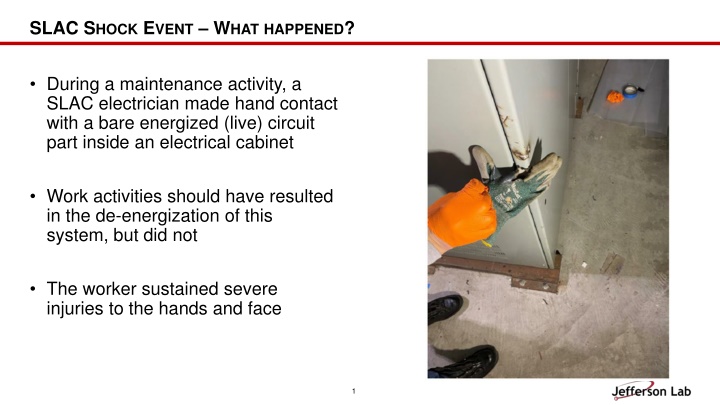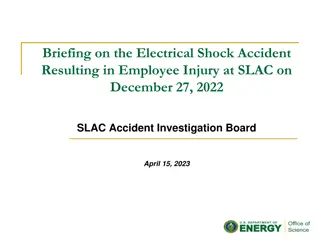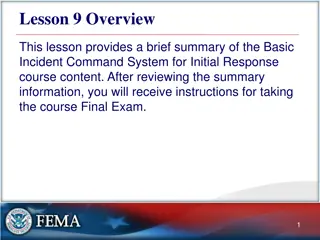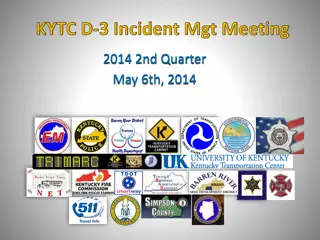SLAC Electrician Incident Analysis
During a maintenance activity, a SLAC electrician sustained severe injuries after making hand contact with an energized circuit part inside an electrical cabinet. The incident occurred due to a lack of proper procedure adherence, equipment de-energization oversight, and inadequate safety measures. Findings reveal systemic issues in supervision, documentation, and normalization of procedure deviations. Lessons highlight task demands, staffing challenges, unclear expectations, and inaccurate risk perception that contributed to the incident.
Download Presentation

Please find below an Image/Link to download the presentation.
The content on the website is provided AS IS for your information and personal use only. It may not be sold, licensed, or shared on other websites without obtaining consent from the author.If you encounter any issues during the download, it is possible that the publisher has removed the file from their server.
You are allowed to download the files provided on this website for personal or commercial use, subject to the condition that they are used lawfully. All files are the property of their respective owners.
The content on the website is provided AS IS for your information and personal use only. It may not be sold, licensed, or shared on other websites without obtaining consent from the author.
E N D
Presentation Transcript
SLAC SHOCK EVENT WHATHAPPENED? During a maintenance activity, a SLAC electrician made hand contact with a bare energized (live) circuit part inside an electrical cabinet Work activities should have resulted in the de-energization of this system, but did not The worker sustained severe injuries to the hands and face 1
HOW DID IT HAPPEN? The worker assumed he understood how the cabinet was powered, but this had been changed and he was not aware nor did he read the procedure which reflected this change The worker did not confirm the equipment had been de-energized per the procedure and training The worker was not wearing the correct PPE (not causal but contributed to the severity) 2
WHY DID IT HAPPEN? (2) Previous assessment findings were not quickly corrected (4) Ineffective supervisor oversight did not correct these problems (1) Lab allowed temporary system changes to become permanent without providing resources to document and communicate changes (3) Procedure deviation was normalized over time (skill vs rule) 3
WHAT CAN WE LEARN? Task Demands / Time pressure ( mission critical equipment going down) Less than optimal staffing levels issue was raised and a work around developed Lack of or unclear expectations - What is a good pre-job? Do we have a good procedure? Are we following the procedure? Changes/departures from routine the system did not respond as expected Unexpected equipment conditions the system did not react as expected but they convinced themselves it was ok Inaccurate risk perception workers had done this in the past with no severe outcomes 4























